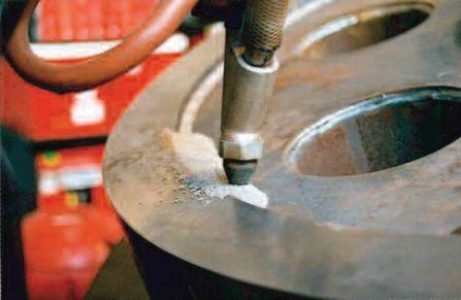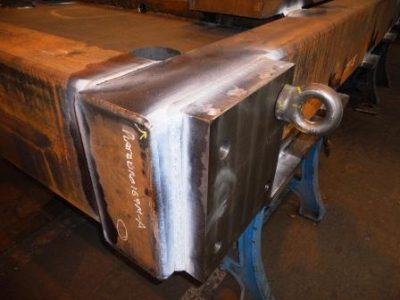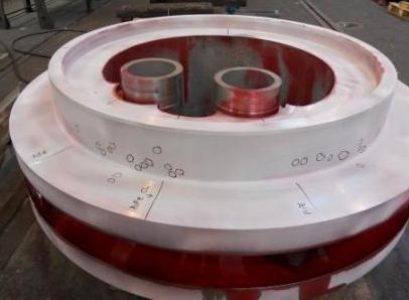Fabrication Capacity
Oldham Engineering Ltd (OEL) has a wide range of manufacturing capabilities. This section briefly details the companies Fabrication extensive capabilities.
Fabrication personnel (welders, operators and platers) are qualified and certificated to a range of standards including BS EN ISO, AWS, ASME IX and DIN 2303.
In brief, our capabilities include;
Materials and Qualifications
- Materials and Qualifications
- Carbon Steel including high strength steels, such as S690, Armox and Strenx.
- Stainless Steel
- Duplex and Super Duplex.
Oldham Engineering also has a dedicated High Integrity Fabrication Division.
Welding Process
Oldham Engineering offer a wide range of welding procedure qualifications, BS EN ISO, AWS, ASME IX, DIN 2303 and DNV. When required customer specification qualifications will also be undertaken.
- MIG / MAG
- FCAW and MCAW
- SAW
- TIG


Oldham Engineering 6 P's
After the quality standard has been established, the most important step toward its achievement is the selection of the best process and procedures. By giving attention to the SIX Ps, weld quality will come about almost automatically, reducing subsequent inspection to a routine checking and policing activity. The SIX Ps are: The Oldham Engineering Ltd. 6 P’s
Process Selection
The process must be right for the job.
Preparation
The joint configuration must be right and compatible with the welding process.
Procedures
To assure uniform results the procedures must be spelled out in detail and followed carefully during welding.
Pretesting
By full-scale mockups or simulated specimens the process and procedures are proved to give the desired standard of quality.
Personnel
Qualified people must be assigned to the job.
Post Weld Inspection
To inspect the product for defects and check for distortion of the fabrication.
Calibration
Non-Destructive Examination
Oldham Engineering can offer a variety of NDE techniques, including Visual, MPI, DPI, Radiography and Ultrasonic and is conducted at the clients / specification request.
NDE can be undertaken at all stages of the project, from the parent materials, plates, bars and sections to the completed fabrication of the welds. NDE is operated under an appointed Level 3 technical in all techniques.
OEL have PCN Level 2 certified MPI, DPI, VT and UT (forgings and plate) personnel. CSWIP Level 2 VT and RT Interpretation personnel.
OEL have CSWIP 3.1 and 3.2 welding inspectors.
Visual Inspection
Visual inspection will begin before the first arc is struck. Materials will be examined to see if they meet specifications for quality, type, size, cleanliness and freedom from defects.
Foreign matter such as grease, paint, oil, oxide film and heavy scale, that could be detrimental to the weld is removed.
Alignment and the fit of parts and the fixtures will be inspected before welding commences. Joint preparation will also be checked as early inspection is a significant factor in weld quality.
Completed welds are visually inspected to ensure compliance with the appropriate client standards. Oldham Engineering Weld Inspectors are PCN qualified. Visual Inspection standards include BSEN ISO17637
MPI (Magnetic Particle Inspection)
Magnetic Particle Inspection is used for the detection of surface and sub-surface defects in ferrous materials. It makes use of an externally applied magnetic field or electric current through the material and the principle that the magnetic flux will leave the part at the area of the flaw.

DPI (Dye Penetrant Inspection)
Dye Penetrant Inspection (DPI) is also called liquid penetrant inspection (LPI) and is used to locate surface-breaking defects.
DPI may be applied to all non-ferrous materials, but for inspection of ferrous components MPI is preferred for its subsurface detection capability.
DPI is used to detect casting and forging defects, cracks and leaks in new products as well as fatigue cracks on in-service components.

Radiography Inspection
Radiography Inspection is used to detect internal flaws in welds. The radiographic film gives a permanent record of the results.
Ultrasonic Inspection
Ultrasonic Inspection is generally used for detecting defects in plates with a thickness of 10mm (3/8″) and above. This is the preferred method for detecting planar defects.
